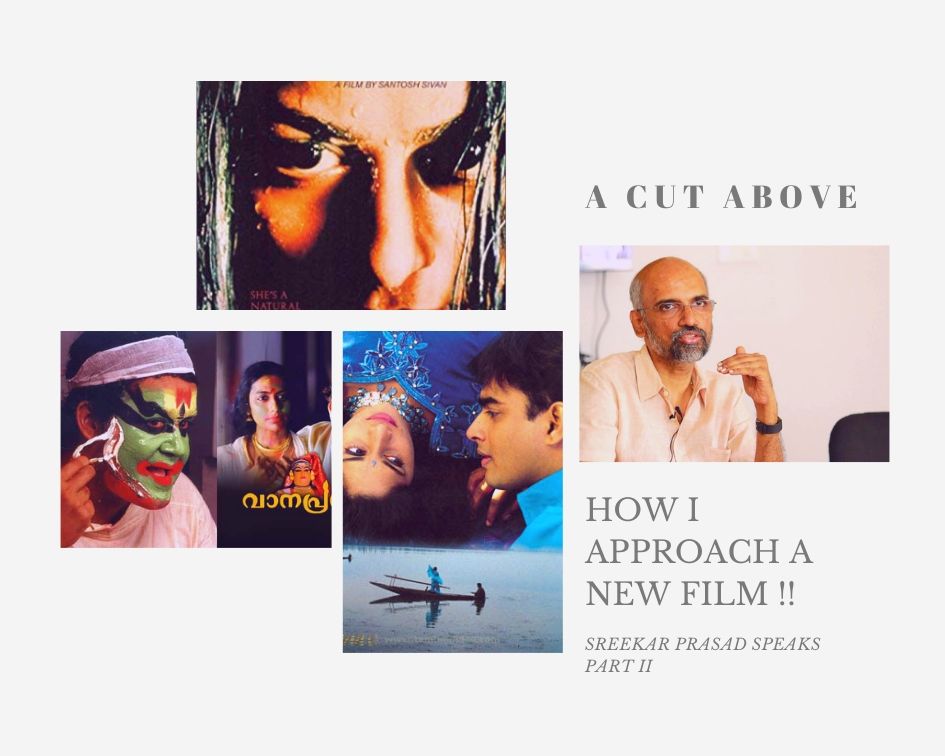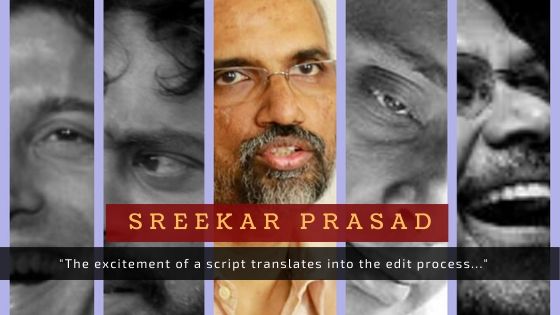Editing is the process where the story takes it’s real shape – but that’s what we already know, don’t we? What we probably do not know is the role that the film-editor plays during the entire creative process of a film.
Yes, he is there, all along, and not just as a spectator – as an active storyteller.
That’s how Sreekar Prasad perceives his role as a film-editor.
That’s the impression I gathered when I asked him how he approaches a new film when it comes to him. In his recollections, he had mentioned that he has an inclination for offbeat stories – doesn’t matter if they have a low budget. I feel this incline has helped him select films that are different in approach – and helped him leave his indelible stamp in each and every work he has done in a career spanning three decades. And in these films, he has involved himself, right from the scripting stage,
Anyways, I am not here to write his biopic. I am here to learn from him, and, if possible, adapt and implement those work-lessons to the best of my ability.
So let me come straight to the point here.
That makes absolute sense.
In our documentary industry, however, editors often come in at a later stage, unless it’s an ambitious ‘profile’ documentary or a ‘historical’ – something that requires a certain amount of visual designing and story-boarding even before the film is shot.
But that’s rare. What happens mostly is that the editor ends up with a few kilometers of raw footage – and a script that’s pointing at somewhat the opposite direction.
Anyways, let’s not whine.
I would rather say our documentary editors also need to be part of the pre-production scripting process. Whenever they are involved right at the top, we get better scripts leading to better films; since then, in those cases, we can shoot-to-edit.

For Sreekar Prasad, it’s the story that matters the most.
His entire endeavor, at all phases of his involvement with the film, is to bring out the finer nuances of this story. One key (and perhaps the most crucial) element in this storytelling is identifying the right takes, that best represents the ethos of the character within the context of the script.
Every ‘take’ the editor selects has a role to play in the progression of the story-line.
So simply speaking, he has to select it right, to depict the right flow of emotions that makes the viewers ‘belong’ to and ‘engage’ with the story being told.
Ok, so that’s the whole idea.
Much like a symphony, you play with bits and pieces of performances, and stitch them together in a way that matches with the ‘imagination’ you had about the story at the scripting stage.
Selection of the right takes helps you do that.
There’s always a better way to tell a story.
But that ‘way’ should not tide over the content and the intent. The story always comes first – how you tell it depends on what needs to be told. That’s a ground rule.
Well, that’s all for the day. Like all good things in life, this too had to end.
If luck favors me I might get to meet him again sometime in the future – there’s much that I still have to learn from Sreekar Prasad.
For all of you that have come to this post first, allow me to tell you that this is the second installment of a two part interview series. You can also consider reading the first part, which is majorly on documentaries.
One thing that I got to realize from this entire exercise is – there’s a real intimate relationship between the script writer and the film editor.
They embellish the story together – at least most good films are nurtured like that.
A realization that raises my hope and kindles my aspirations.
There’s a lot that remains left to be done. Let’s see…


Marako interview PDF format ma chahia
Please copy paste from the blog into a word file and then create whatever pdf you want out of it.